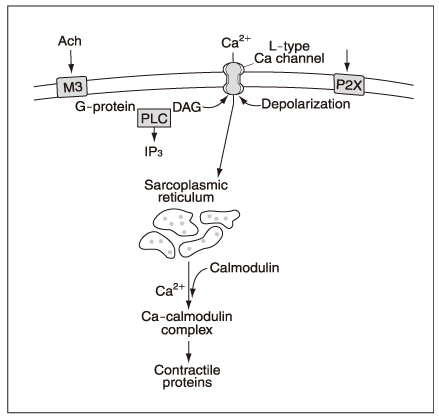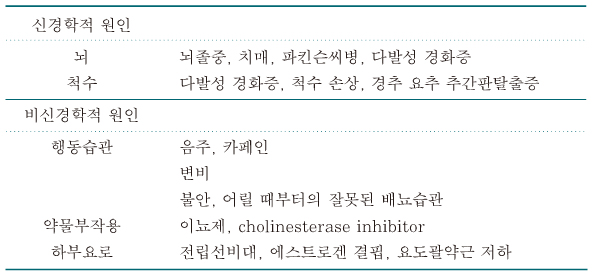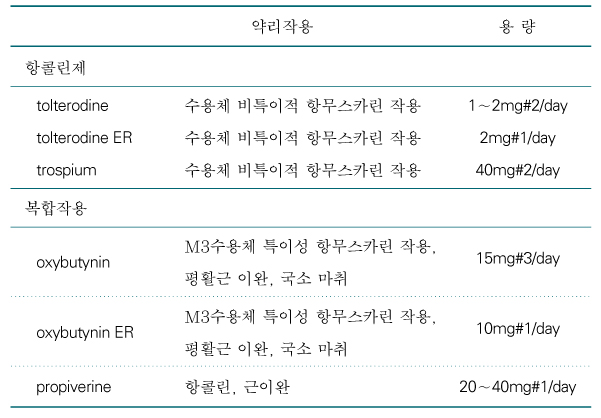 |
 |
- Search
| J Korean Med Assoc > Volume 49(4); 2006 > Article |
Abstract
Overactive bladder (OAB) is characterized by urgency, with or without urge incontinence, and is usually accompanied by an increased micturition frequency and nocturia in the absence of other identifiable metabolic or pathologic conditions affecting the lower urinary tract. Although OAB is a common, distressing condition, a large number of patients remain untreated. The antimuscarinic drug medication, in conjugation with behavioral therapy such as bladder training, remains the first-line management of patients with OAB. Drugs used to treat OAB affect the nerve and function of the detrusor muscle, causing the detrusor muscle to relax and thus reduce the frequency and intensity of contractions of the bladder. These drugs work by blocking the binding of neurotransmitters called acetylcholine to specific sites of the bladder muscle. The binding of neurotransmitters to the receptor sites causes a sequence of changes that result in muscle contractions. Blocking this binding prevents the contraction of the bladder. Adverse events, such as dry mouth, dry eyes, constipation and headache can occur in all antimuscarinic drugs. In addition, intravesical injection can be used for patients who do not respond to oral medication.
References
1. Michael BC, Naoki Y. In: Walsh PC, Retik AB, Stamey TA, Vaughan ED, editor. Physiology and pharmacology of the bladder and urethra. Campbell's Urology 2002;8th ed. Philadelphia: Saunders. 838-886.
2. Schurch B, Stohrer M, Kramer G, Schmid DM, Gaul G, Hauri D. Botulinum-A toxin for treating detrusor hyperreflexia in spinal cord injured patients: a new alternative to anticholinergic drug? Preliminary results J Urol 2000;164:692-697.
3. Brendler CB, Radebaugh LC, Mohler JL. Topical oxybutynin chloride for relaxation of dysfunctional bladders. J Urol 1989;141:1350-1352.
4. Buyse G, Waldeck K, Verpoorten C, Bjork H, Casaer P, Andersson KE. Intravesical oxybutynin for neurogenic bladder dysfunction: less systemic side effects due to reduced first pass metabolism. J Urol 1998;160:892-896.
5. de Seze M, Wiart L, Ferriere J, de Seze MP, Joseph PA, Barat M. Intravesical instillation of capsaicin in urology: a review of the literature. Eur Urol 1999;36:267-277.
6. Chancellor MB, deGroat WC. Intravesical capsaicin and resiniferatoxin therapy: spicing up ways that we treat the overactive bladder. J Urol 1999;162:3-11.
- TOOLS
-
METRICS

-
- 0 Crossref
- Scopus
- 1,113 View
- 2 Download
-
Related articles in
J Korean Med Assoc -
Clinical features and treatment of rosacea2024 May;67(5)
Medical treatment of pediatric obesity2024 May;67(5)
Antiretroviral treatment for HIV infection and AIDS2024 March;67(3)
Pharmacological treatment of Ménière disease2023 October;66(10)








